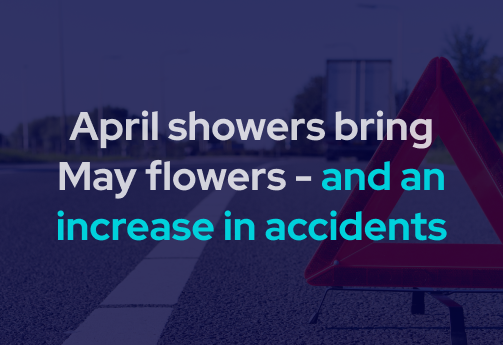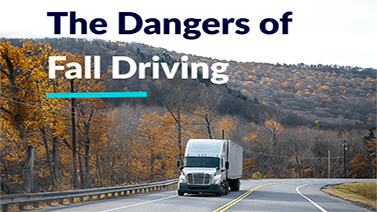April showers bring May flowers – and an increase in accidents

For semi-truck drivers, it’s crucial to recognize the hazards that come with wet and rainy weather. According to data from the U.S. Department of Transportation Federal Highway Administration, weather-related crashes are significantly impacted by wet pavement and rain conditions. These conditions account for 59% of such incidents, surpassing the combined total of all other weather-related crash causes. Furthermore, wet and rainy weather contribute to 81% of injuries and 75% of fatalities associated with weather-related crashes.
What is semi-truck hydroplaning?
Did you know that a fully loaded semi-truck can hydroplane on as little as 1/10th of an inch of standing water, especially when traveling at speeds over 35 mph? Hydroplaning occurs when a vehicle’s tires float on a layer of water, losing traction with the road. This can cause a loss of control over steering, braking, and acceleration, creating a serious safety risk for drivers.
Even if there’s only a small amount of water on the road, hydroplaning can happen. Recognizing the causes and understanding the warning signs are essential for drivers to take preventative actions and reduce the risk of accidents.
When is hydroplaning most likely to occur?
Though hydroplaning is influenced by various factors, it is most prevalent within the initial 10 to 20 minutes of rainfall. During this period, rainwater mixes with residual oil on the road surface, creating a particularly slippery and hazardous condition. Commercial drivers are advised to be aware of this increased risk and exercise heightened caution.
Ways to help avoid hydroplaning
-
- Increase your following distance.
Maintaining a safe distance will allow for an escape route or evasive maneuver if necessary. - Reduce your speed.
The faster a vehicle travels, the less time the tires have to displace the water, increasing the risk of hydroplaning. - Don’t use cruise control when it’s wet or in any inclement weather conditions.
Cruise control makes it harder to sense hydroplaning. - Avoid using your engine brake (Jake brake).
It could result in loss of traction and potentially lead to skidding or even jackknifing. - Verify tires have adequate tread depth and are properly inflated.
Under-inflated and worn or bald tires are less effective at pushing water away from the road surface. - Watch for areas with standing water and poor drainage.
- Increase your following distance.
What to do when hydroplaning
It’s essential to exercise extra caution when traveling on wet roads. In the event of hydroplaning, the following steps are recommended to regain control of the vehicle:
-
-
- The first step is to remain calm.
- Don’t slam on your brakes! Sudden braking can cause the vehicle to skid out of control and jackknife.
- Release the accelerator to allow the vehicle to gradually lose speed on its own.
- Make minor steering corrections in the direction you’re drifting. Abrupt and sharp steering maneuvers can cause your vehicle to swerve into another lane. Remember, you’re gliding over water, therefore your control is significantly reduced.
- Once the truck has regained contact with the road, you can safely ease on the brakes.
-
Final thought: driver safety in adverse weather conditions
Safety is a big concern to everyone on the road and for commercial drivers most of all. According to the National Safety Council, nearly 6,000 professional drivers were involved in fatal crashes in 2022, a 1.8% increase from the year before. Even more alarming, in the last 10 years, fatal crashes among commercial drivers have surged nearly 50%.
Adverse weather conditions are unavoidable, but it is essential to always prioritize safety. If you are uncomfortable with the driving conditions, find a safe location to park the truck and allow the conditions to improve. No load is worth risking human life, and avoiding becoming a statistic should always be your primary focus.


